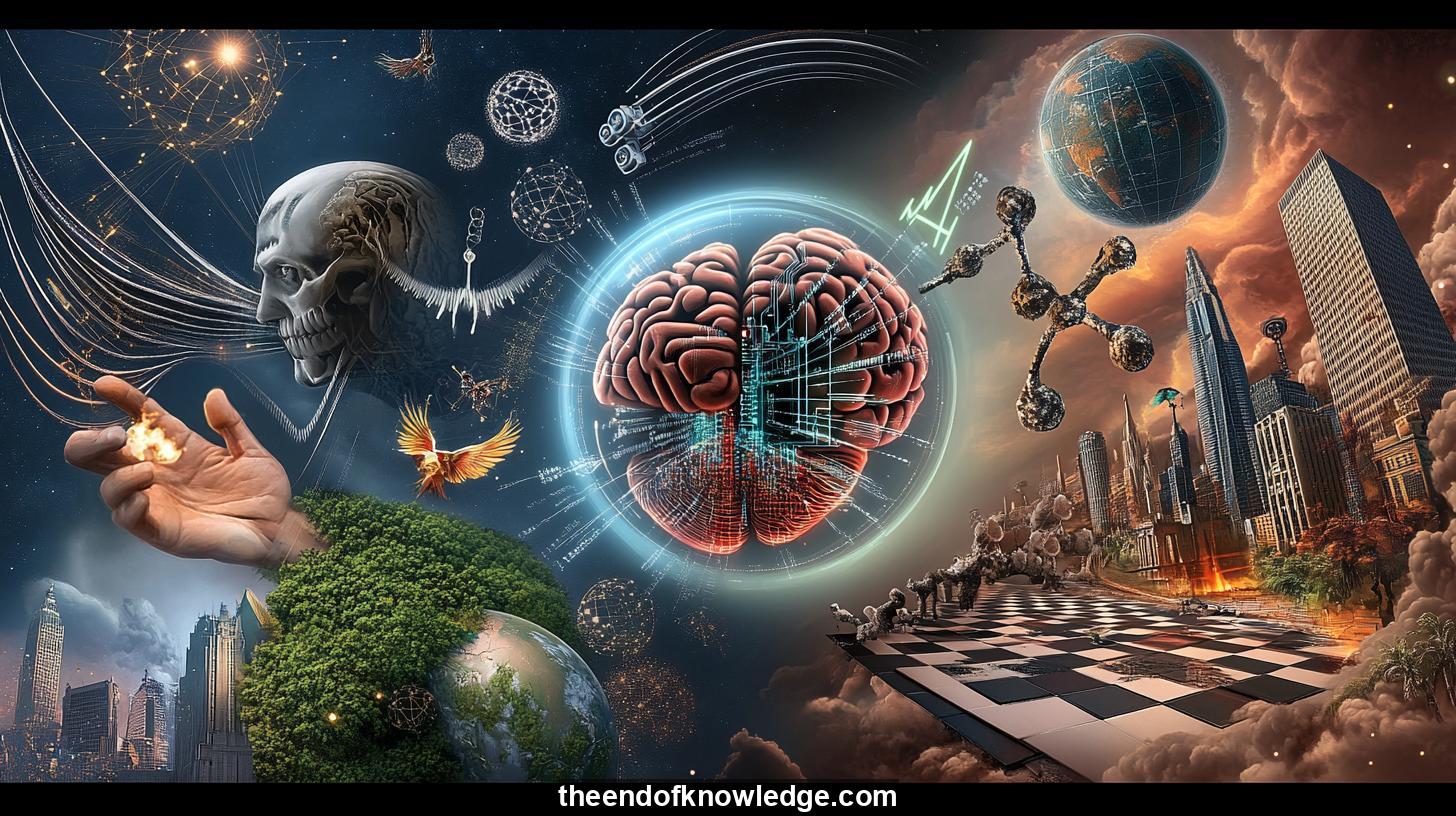 >
>
Concept Graph, Resume & KeyIdeas using DeepSeek R1 :
Resume:
explores the evolution and implications of artificial intelligence (AI), focusing on its potential to surpass human capabilities in various tasks. It discusses the concept of intelligence, both human and artificial, and how AI systems like AlphaGo and GPT have demonstrated remarkable problem-solving abilities through reinforcement learning and large-scale simulations. The text highlights the ethical and philosophical challenges of creating autonomous AI, emphasizing the need for alignment between human values and AI objectives. It also touches on the importance of embodiment and multi-agent systems in advancing AI capabilities. concludes by reflecting on the societal impact of AI and the need for interdisciplinary collaboration to ensure that AI development aligns with human well-being.30 Key Ideas:
1.- discusses the evolution of artificial intelligence and its potential to surpass human capabilities in various tasks.
2.- It explores the concept of intelligence, both human and artificial, and how AI systems like AlphaGo and GPT have demonstrated remarkable problem-solving abilities.
3.- The text highlights the ethical and philosophical challenges of creating autonomous AI, emphasizing the need for alignment between human values and AI objectives.
4.- It touches on the importance of embodiment and multi-agent systems in advancing AI capabilities.
5.- concludes by reflecting on the societal impact of AI and the need for interdisciplinary collaboration to ensure that AI development aligns with human well-being.
6.- The discussion delves into the computational nature of intelligence, arguing that AI systems can be seen as optimizing reward functions in complex environments.
7.- It compares human cognition, which involves consciousness and subjective experience, to AI's ability to process vast amounts of data and simulate scenarios.
8.- critiques the limitations of current AI systems, such as their reliance on reward signals and their lack of true understanding or consciousness.
9.- It raises questions about the future of AI, including the potential for general intelligence and the ethical dilemmas of creating autonomous entities.
10.- A significant portion of the text is dedicated to the technical aspects of AI development, including reinforcement learning, neural networks, and the integration of symbolic and connectionist approaches.
11.- It references specific advancements, such as DeepMind's AlphaGo and Microsoft's AutoGen, to illustrate the rapid progress in the field.
12.- discusses the role of simulation in training AI agents and the challenges of transferring learned behaviors from virtual environments to real-world applications.
13.- The ethical implications of AI are a recurring theme, with a focus on the need for alignment between AI systems and human values.
14.- questions whether AI can truly be "aligned" with human morality and highlights the risks of creating systems that operate beyond human control.
15.- It emphasizes the importance of interdisciplinary research, involving not only computer scientists but also philosophers, ethicists, and sociologists, to address these challenges.
16.- reflects on the broader societal impact of AI, including its potential to transform industries and reshape human culture.
17.- It calls for a balanced approach to AI development, one that harnesses its benefits while mitigating its risks.
18.- The text concludes by urging continued exploration and dialogue to ensure that AI serves as a tool for human advancement rather than a source of harm.
19.- The discussion highlights the importance of understanding the differences between human and artificial intelligence in terms of consciousness and creativity.
20.- It explores the potential for AI to augment human capabilities while preserving human agency and autonomy.
21.- emphasizes the need for robust regulatory frameworks to govern the development and deployment of advanced AI systems.
22.- It discusses the role of education and public awareness in shaping a future where humans and AI collaborate effectively.
23.- The text raises questions about the long-term implications of AI for employment, privacy, and social equity.
24.- It highlights the importance of diversity in AI development teams to ensure that AI systems reflect a broad range of human perspectives and values.
25.- explores the potential for AI to address complex global challenges, such as climate change and healthcare, while acknowledging the risks of over-reliance on technology.
26.- It discusses the ethical implications of AI systems that can generate creative content, such as art and music, and the potential impact on human cultural expression.
27.- The text raises concerns about the transparency and explainability of AI decision-making processes, particularly in high-stakes applications.
28.- It emphasizes the need for ongoing research into the safety and robustness of AI systems, particularly as they approach human-level intelligence.
29.- calls for a global conversation about the ethical and societal implications of AI, involving stakeholders from all regions and disciplines.
30.- It concludes by reaffirming the potential of AI to drive positive change while urging caution and responsibility in its development and deployment.
Interviews by Plácido Doménech Espí & Guests - Knowledge Vault built byDavid Vivancos 2025